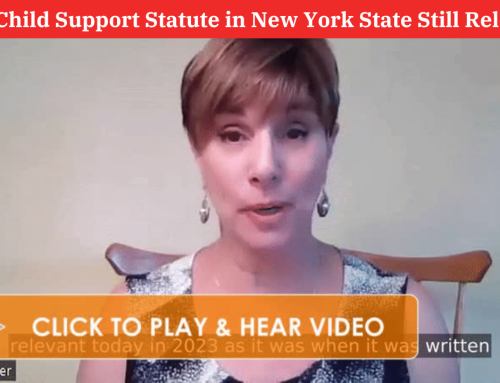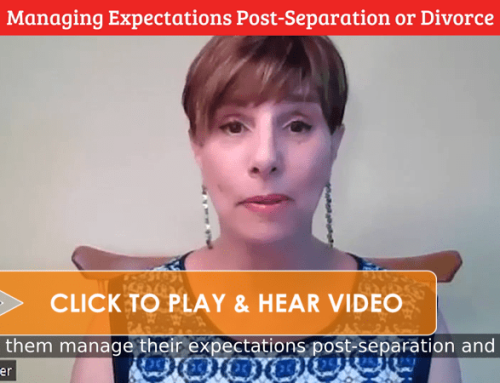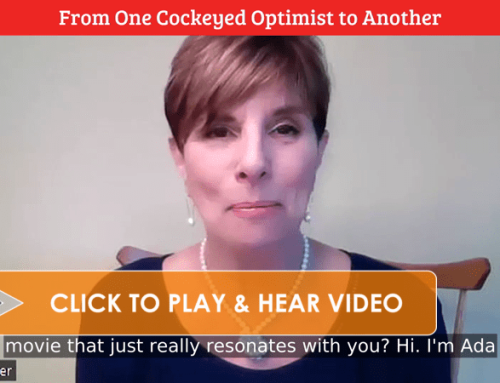How Do We Get “There” Together?
 In Part 1 of the “Financial-Emotional Conundrum” I touched on how the emotional aspect of our nature can often rule our responses to the many situations that either we bring to life or that life brings to us. One of the biggest, our financial situation, is frequently ruled by emotions.
In Part 1 of the “Financial-Emotional Conundrum” I touched on how the emotional aspect of our nature can often rule our responses to the many situations that either we bring to life or that life brings to us. One of the biggest, our financial situation, is frequently ruled by emotions.
When couples are considering a separation, one of the most challenging and important areas to be explored is how to allocate the available resources (money) so that both parties and the family have enough to live on. This can be a great source of emotional anxiety as the partners may feel that their safety and security is about to be threatened. When this happens, logic takes a back seat, feelings overwhelm and the fight or flight instinct kicks in.
One of the great benefits of mediation is that the process itself allows the couple to take a step back and look at the whole picture together. We put a little air around us as everyone’s needs are considered and addressed. We look at things from several points of view:
|
Divorce Made Easier “You have made this very painful process much easier with your calm, warm demeanor and professionalism. I thank you!” -J.C. |
- How have you run the family finances in the past?
- What are the current needs?
- How do we accommodate those needs once the household is split?
The thing to keep in mind is that we earn what we earn, and unless there is another avenue of funds coming in, we live on what we take home in our paychecks, making ends meet as best we can. This is what we do when we are married and it will not change when we are separated. Although the parties may value things differently (which may be one of the reasons the relationship is no longer working), they must take into account each other’s financial contributions in order to figure out the best way to allocate those monies for the sake of the whole, meaning the entire family.
If money was tight before, it’s certainly going to be tight when you separate. The rule of thumb is that when you split households you are going to live on 30% less than what was available before. Think about it – at the very least, there will be two mortgage/rental payments, two sets of utility payments, not to mention higher car insurance rates and cell phone plans (when you unbundle the family plan) and so on. All of these things need to be taken into consideration.
In my mediation process, I include a budget session early on. I give my clients a very detailed “post separation” budget form and ask them to take it home and consider every line item on the form and account for it in some way. In living our lives day to day, you would be surprised how many expenses, we forget about. As things come up, we just shell out the money and don’t give much thought to, among other things:
- Extracurricular activities
- Haircuts
- Take-out food
- Hobby expenses
- Birthday gifts for the children’s friends
- Lunch money
- Weekend vacations, etc.
And it all adds up.
When I work with couples for whom money is already stretched, they are usually more prepared for the financial picture that emerges when we look at post separation budgets. However there are many who come to mediation with what I call a “sorta, kinda” idea of what their expenses are. Once we start crunching the numbers, the true picture comes to light. In today’s economy, even households with two incomes are not a guarantee that there will be enough to support a standard of living that partners are used to or feel they need/deserve/are entitled to, etc.
Together, we look at the post separation budgets and if necessary, separate the essentials from the non-essentials. Then we account for each spouse’s income, incorporate the child support calculations, maintenance (if appropriate) and begin exploring the various options to accommodate everyone’s needs going forward.
The reality is that things are going to change and working together, with the guidance of a mediator, to make the best of those changes is the way to go. By brainstorming ideas, teasing out the options, and thinking out of the box (you would be surprised at some of the amazing solutions people come up with) the likelihood that the parties will be able to live with, and within their agreements is much higher.
- Does Child Support Have to be Paid? - April 17, 2024
- Is the Child Support Statute in New York State Still Relevant Today? (video) - April 2, 2024
- Managing Expectations Post-Separation or Divorce (video) - March 6, 2024






Wow Ada, good for you for bringing people together to brainstorm creative solutions to the problems that they share!